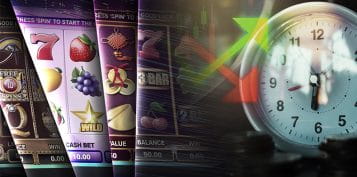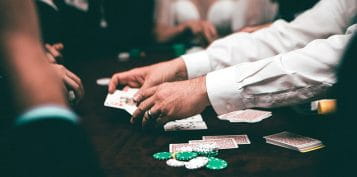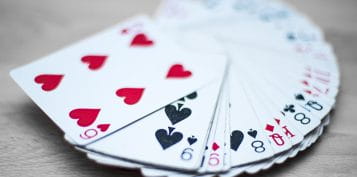Blackjack Rules – All the Essentials to Get You Going
The game of blackjack, also known as Twenty-One, is one of the most known and popular gambling card games. While the blackjack rules are simple and allow new players to quickly get the hang of it, putting in the time and learning its ins and outs truly sets the pros from the casual enthusiasts. Join us, and learn all about blackjack rules, the best strategy, player moves and gestures.
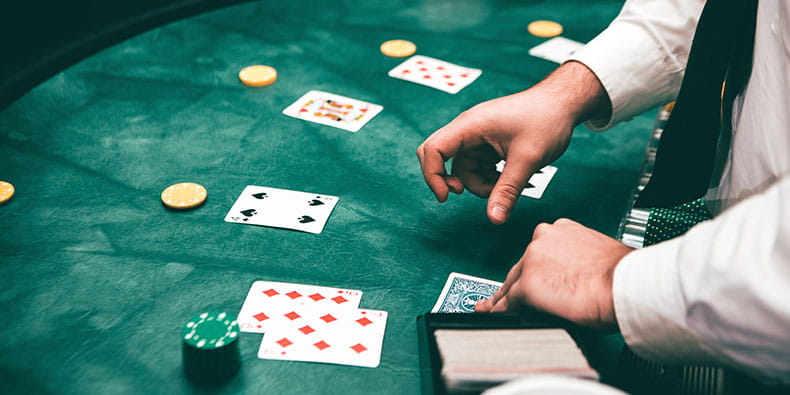
This informative blog post will present you with a complete, yet easy-to-digest, complete rundown of the blackjack rules. We are going to go over the terminology used in a game of classic blackjack as well as some of its most popular variants. That said, without further ado, let us get right into the action.
Classic Blackjack Rules – Origin
The wide popularity of blackjack is believed to have begun in the trenches of World War I. However, the very roots of the game go back to the 1760s in France. Back then, the game was called Vingt-et-Un, which means twenty-one in French, hence its name.
The blackjack game was initially played at unregulated locations with slightly different rules. The variations that we know today came later as blackjack began to be offered and played at casinos. In fact, there is hardly a casino in the world which does not have at least one blackjack table.
Unlike the good-old pub days of the interwar years, the game of blackjack is played with a casino dealer who represents the house (the casino). Respectively, the dealer is in charge of running all aspects of the blackjack table, including shuffling and dealing cards as well as handling bets. In comparison, every player could’ve been the dealer in the unregulated version of twenty-one.
Blackjack Layout & Symbols
With the history of blackjack, anyhow, let us get to the practicalities; after all, that is the reason we are here. To do that, however, we should first clarify the game’s table layout and playing cards so we can freely discuss the rules of blackjack. That said, the following image will provide you with an overview of the blackjack table:
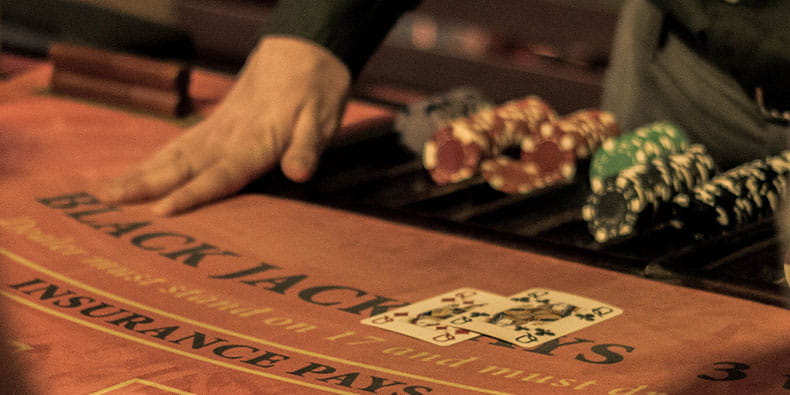
As you can see from the image above, a blackjack table is quite slick and straightforward, built in a half-circle shape, allowing players to comfortably sit and enjoy the game. It is spacious, and there isn’t much on it apart from a few rectangle slots representing where individual players will place their bets.
Respectively, once a player enters a game, the dealer will place the individuals’ cards just above the rectangles. Additionally, the dealer uses the space above (or behind) the table text to keep the blackjack deck and play the dealer’s cards. Those who have played at some of the top live online casinos in the UK have probably noticed that the blackjack deck is usually kept at a side in a shoe dispenser.
- 2,3,4,5,6,7,8,9 – Face Value
- 10, J, Q, K – Value of 10
- Ace – Value of 1 or 11
Essentially, regardless of the variants, the blackjack rules state that twelve different card symbols come into play. The play cards with numbers from 2 to 9 have the same face value of their number, while cards like 10, J, Q, and K have a value of 10. The most agile card is the Ace, which can take the value of either a one or eleven.
Deck Sizes in Blackjack
Here, it is important to point out that a blackjack deck does not consist of only 13 cards. Instead, it is made of 52 cards that are divided into four suites, respectively spades, diamonds, hearts, and clubs. Furthermore, while some blackjack variants make use of only one deck, some versions use two, four, six, or even eight. That said, we have prepared a short table presenting the odds in the player’s favour depending on the number of decks.
| 1️⃣ One Deck | 0.48% |
| 2️⃣ Two Decks | 0.19% |
| 4️⃣ Four Decks | 0.06% |
| 6️⃣ Six Decks | 0.02% |
| 8️⃣ Eight Decks | 0.01% |
Following the table, we must state a few things. First of all, one of the reasons for casinos to introduce blackjack tables with multiple decks is to lower the chances of card counting. That method was exploited by many in the past, including the so-called MIT blackjack team, and it made the game rather unbalanced.
Second, despite the higher players’ favour on single deck tables, many online and brick-and-mortar casinos offer them a payout of 6:5, increasing the house edge significantly. Meanwhile, multi-deck blackjack games give a payout of 3:2 and have a house edge of 5.8% on insurance, compared to 5.9% for single-deck tables.
The Blackjack Objective – Beat the Dealer
The blackjack rules are quite simple, and so is the game’s main objective: beat the dealer by getting a count as close to 21 as possible without going over that number Unlike other card games, like poker, where players compete against one another, in blackjack, your sole goal is to defeat the dealer and nothing else.
Of course, keeping track of what cards other players get could positively impact your strategy, but keep in mind that the leading online live casinos shuffle the decks regularly. Naturally, you will lose your bet if your hand value exceeds 21 or the dealer’s hand has a greater value than yours. Let us now proceed with our step-by-step guide on how to play blackjack.
Step-By-Step Guide on How to Play Blackjack
After we have talked about the rules of blackjack, its objective, table layout, and card value, it is time to go over how to play blackjack. We have prepared a short step-by-step guide below that cover all stages of play. Furthermore, in the following chapters, we will go into great detail about every single one of those steps.
1. Purchase Chips/Make a Deposit
The first step varies a bit depending on whether you have entered a physical casino or its online counterpart. Either way, you must first register at the operator and purchase chips. Most casinos do not allow “cash plays” wagers anymore, meaning that dealers accept only casino chips.
Also, it is important to note that dealers can exchange money for chips. For security reasons, you should place your money on the felt of the table, and the dealer will replace them with chips. That is done so the cameras can clearly record the transaction.
Once that stage is done, on-site visitors may go straight to the blackjack table or stop by the bar for a beverage. If you are just about to launch any of the blackjack games online, we would advise you to also check out the operator’s welcome bonus offers and see if there is a deal that matches your playstyle and standards.
2. Place a Wager
Once you are on the blackjack table and you have successfully acquired chips or online credits, you can wait for the new round to begin. At the start of it, you must place a bet in the betting circle or rectangle (or casino logo).
While the online and live counterparts of the game usually have the betting limits listed in the description or in the name of the table, the brick-and-mortar table has a small sign at the far right or left side of the table. Most places, just like the best UK gambling sites and blackjack platforms, have a minimum bet requirement of £5.
3. Dealer Deals Cards to the Players
Following the blackjack rules for dealers, the croupier at the table or at the live casino must officially close the betting stage and proceed to deal cards to the players that have placed a wager. The dealer will deal clockwise, one card face up to each player at the table, followed by one card face down for himself.
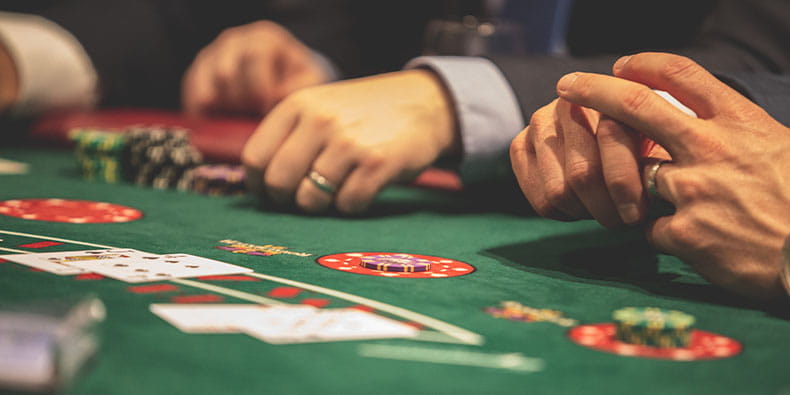
Depending on the exact blackjack rules for dealers, some cards might be burned during the dealing stage. Nevertheless, the process repeats twice and each player has two cards face up, while the dealer has one face up and one face down. At this stage, the blackjack table should look something like the picture below:
4. Players Make Their Turn
The next stage, according to blackjack card rules in the UK and abroad, is for the players to make their turn. Once again, the dealer will start with the person on their left, aka “first base”, and wait for them to play their hand. This is the first thing players do to calculate the total value of their cards.
If you are dealt a ten-value card and an Ace, you have a blackjack, and you instantly win 3 to 2 or 1.5x your wager immediately. If the dealer also has a Blackjack, you won’t win anything, but you won’t lose either.
This occurrence is called “push”. However, if neither of the two outcomes happens, there are five blackjack player moves that you can do, and we will go through all of them in a bit.
5. Dealer Plays Their Hand
Once all players on the table have completed their turn, it is time for the dealer to play their hand. If you are a new player, we would definitely recommend you begin your blackjack journey by following the basic blackjack strategy.
It is the mathematically optimal way to play for every player’s hand and dealer up-card combination. Going back to the history of blackjack, the strategy was created by a computer that played millions of rounds and determined the best way to play every variation. The dealer shows their last card, and the outcome is plain.
6. Payouts Are Distributed
Once both players and dealer have carried out their turns, there are two possible outcomes. First, if the “dealer busts”, they had gone above 21, and they must pay even money, 1x the wager, to each hand that is still in play.
Second, if the dealer scores anywhere between 17 and 21, their card score will compete with who has the higher hand. If the dealer has a higher number, they will sweep your bet. As said previously, you could score a “push”, where you are given back your wager. The final outcome is for the player to have a higher hand than the dealer, on which the victor is paired 1x their wager.
Player Moves According to the Rules of Blackjack
As we said in our blackjack rules blog post, we will walk you through the five moves players can do in blackjack. We have also included a photo showing the hand gestures for all of them, which are used in all casinos worldwide . Alternatively, if you are playing in an online casino, the gameplay will be identical, except that you will be using a mouse or a touch screen instead.
Stand
After the cards were dealt and you did not get a Blackjack, you could “stand” if you liked your cards. By doing this, the dealer will not give you any other cards and will continue on the next player.
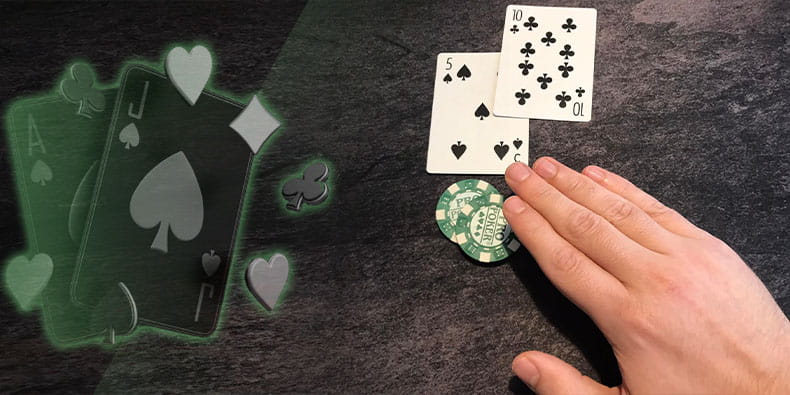
The hand signal is to wave your hand and show an open palm. The “stand” move is usually made when your card value goes too close to 21, for example, a K and a Q; thus, it is better for you not to draw any additional cards.
Hit
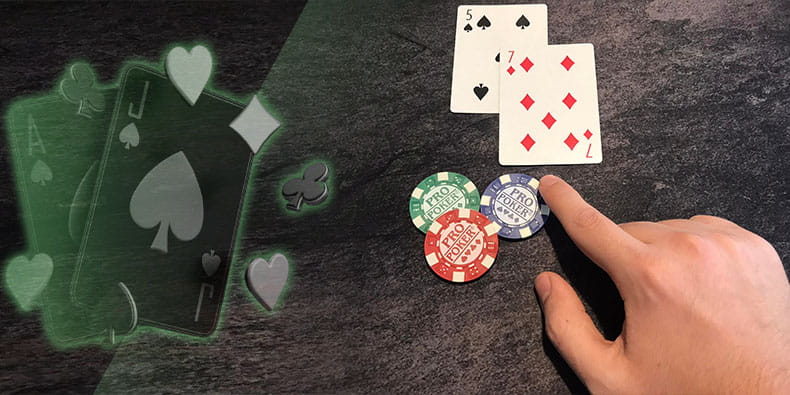
If your first two cards’ value is too low, for example, a 2 and a 3, you could ask for a “hit”. By doing this, the dealer will draw you another card. You can ask for as many cards as you like until you either “bust” (going over 21) or decide to “stand”.
Double Down
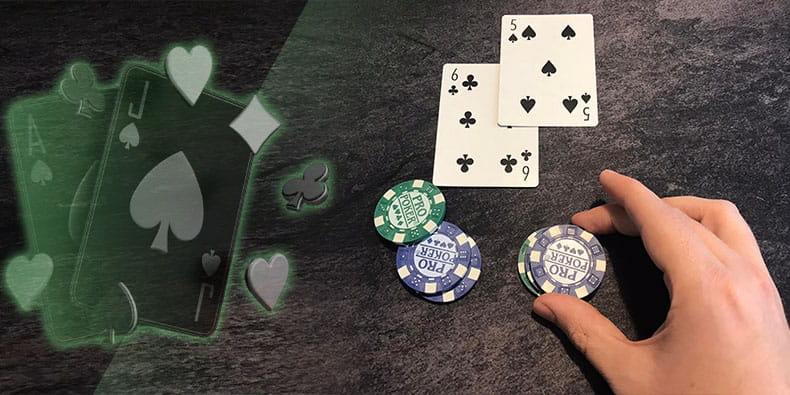
If you happen to have a hand total that seems advantageous, but you need one extra card, you can “double down”. By doing this, you will double your initial wager and receive one additional card. To hand signal the dealer, once it is your turn, simply put up an additional wager on the left side of your bet, equal to your first wager. Respectively, the dealer will give you another card turned sideways.
Split
When you are dealt a pair of two cards of equal value, you can ask for a “split”. That means you will ask for a second wager, and the dealer will split the two cards so that each becomes the first card of two separate hands.
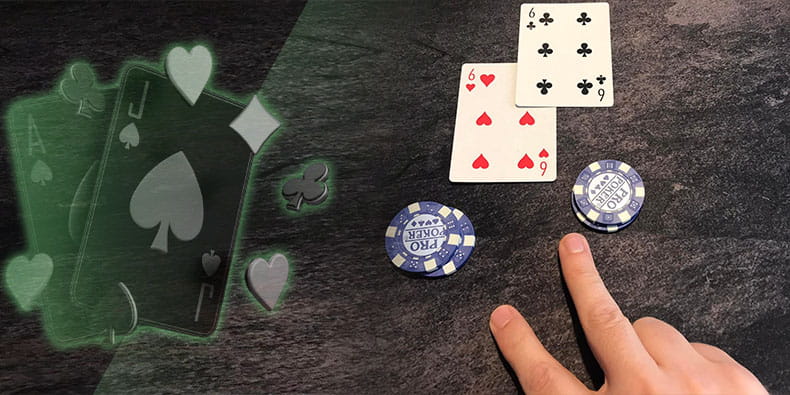
That also includes when having face cards like King or a Queen, as they both have the same value. Following the blackjack card game rules, the hand gesture for “split” is a “peace sign” to indicate that you would like to split into two hands.
Surrender
In case you do not like your initial hand, you have the option of going for “surrender” in exchange for half of your original bet back. The hand signal is to draw a line across the felt behind your bet as if you were cutting it with your pointer finger.
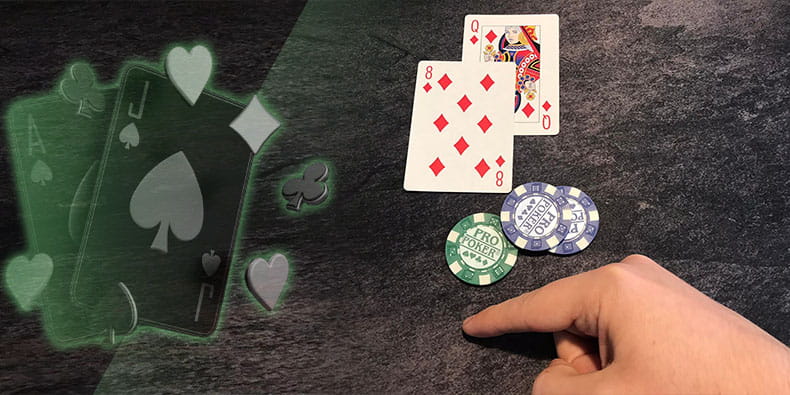
FAQ
We hope you found our post on the rules of blackjack both interesting and informative. To wrap it up, we would like to take a few extra seconds of your time and introduce you to some of the most frequently asked questions and answer them for you.
